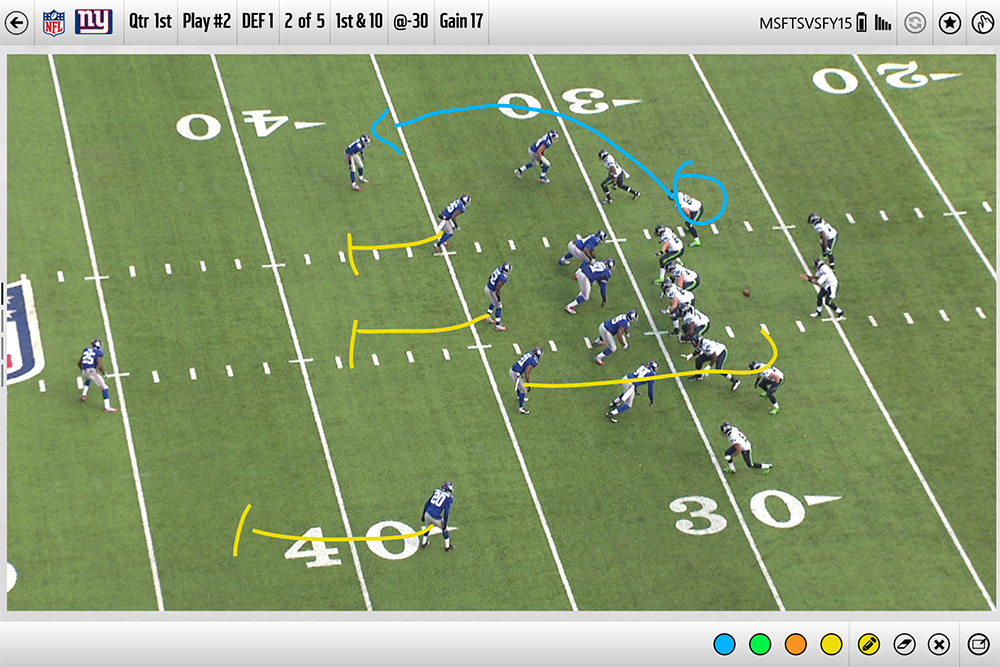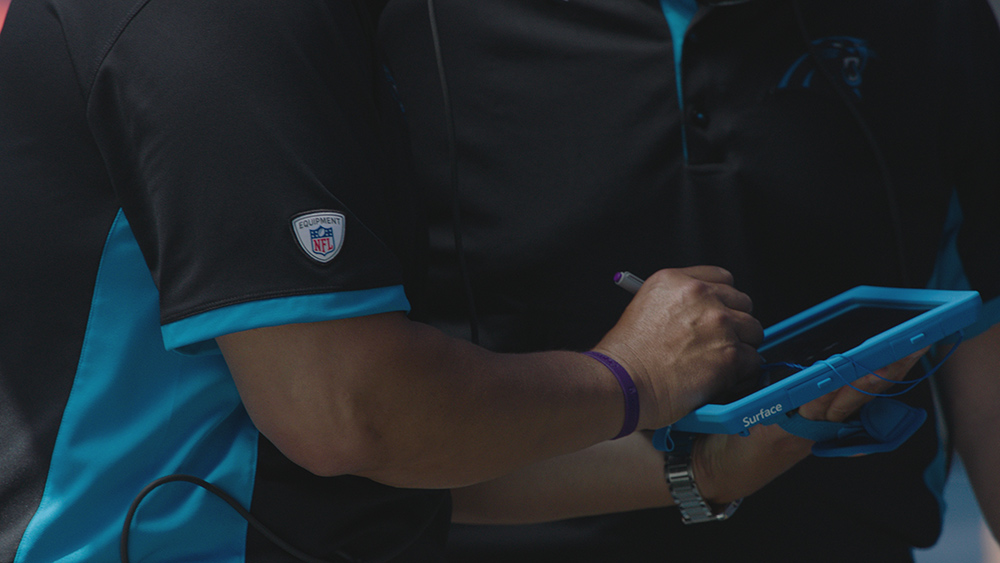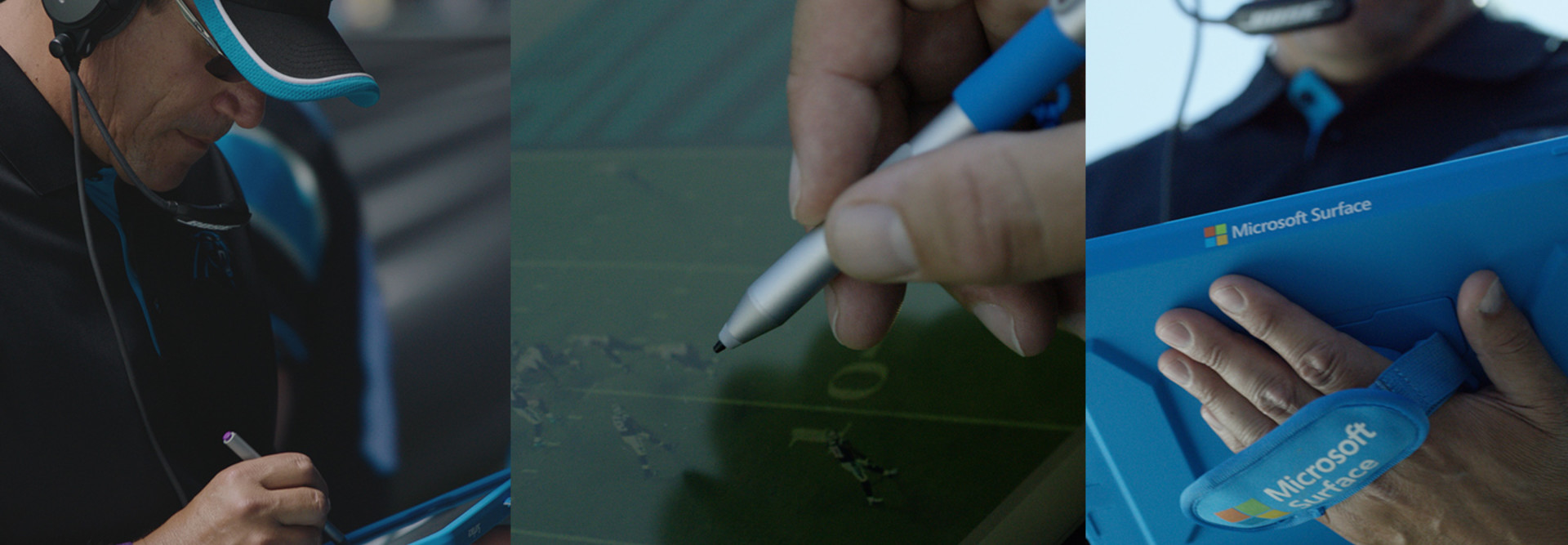Tablets in the NFL: How Technology Has Made a Difference 1 Year Later
NFL coaches and players got a glimpse of the future this preseason when they were allowed to review video using Microsoft Surface Pro tablets on the sidelines — and they liked what they saw.
“We had three tablets with video on each sideline, and we had people saying, ‘Hey, it’s my turn to use the video,’” says NFL Senior Vice President and CIO Michelle McKenna-Doyle. “Typically, in a preseason game, maybe there would not be as much game analysis going on. But because there was the ability to watch video, more players wanted it.”
Last season, after inking a five-year, $400 million partnership with Microsoft, the NFL equipped each team with Surface Pro 2 tablets on the sidelines and in the coaches’ booth during games, so they could analyze high-resolution color photos of each play and make strategic adjustments. Digital photos on the mobile devices are available faster and are a vast improvement over the grainy black-and-white photo printouts that teams used for decades.
Game footage on tablets is a natural next step, so the league tested it during the Pro Bowl in January and in 21 games in nine stadiums during the preseason, McKenna-Doyle says.
“We had to do some trials to make sure the technology worked and to make sure, operationally, coaches were comfortable with it. The feedback was very positive,” she says.
In fact, the league will consider implementing the video feature on tablets as soon as the 2016 season, but it depends on the approval of the NFL’s Competition Committee. “We are pursuing a solution for next season, pending the Competition Committee’s final sign off,” she says.
How Tablets Have Changed the Game

For fans watching football on TV, it’s hard to miss the Surface Pros on the sidelines. Quarterbacks are often seen on the bench, studying pre-snap and post-snap photos of each play on light blue Surface Pro tablets. Other times, players are huddled around tablet-toting coaches, who use the digital photos for instruction. They can point out missed blocks or coverage tendencies.
The Indianapolis Colts still has a photo printer on the sideline as back up, but the Colts players have fully embraced the tablets on the sidelines, says the team’s video director Erik Kunttu.
“In talking to the coaching staff, the speed of the tablets, the color and clarity of the photos, and the ability to zoom and pinch each photo and write on it is huge,” he says.
The NFL, which manages the Surface Pros, equips each team with 13 tablets on the sideline and 12 tablets in the coaches’ booth. The devices are locked down, cannot access the Internet and have only one application installed – a custom Microsoft photo-viewing app.
Coaches in the booth connect their tablets directly to a wired network connection, while the tablets on the sidelines download photos wirelessly through dedicated Wi-Fi networks on each sideline. Two NFL technicians, wearing purple hats, roam each team’s sidelines during games, providing troubleshooting support.
Teams receive the digital photos on the tablets at least 30 seconds faster than the traditional printer method, according to the NFL’s website. The speed is critical because it allows more time for coaches and players to strategize, says Jeff Tran, Microsoft’s director of sports and alliances.
“The NFL always talks about football being a game of inches, but it’s also a game of time,” Tran says. “If they are saving multiple seconds that ultimately leads to minutes, that translates into better productivity and also wins.”
Creating Surface Pros That Are Gridiron Ready

Microsoft makes custom versions of the Surface Pro tablets specifically for the NFL. The hardware is waterproof, built with extra glare protection and can withstand extreme weather, Tran says.
“Any temperature you’ve seen in the NFL since its inception, as cold as the frozen tundra in Green Bay and as hot as the blistering heat in Miami’s stadium, the Surface will withstand any range in-between,” he says.
For extra protection, the devices are housed in ruggedized cases with hand straps on the back of them, so players and coaches can secure the tablets to their hands.
For the 2015 season, Microsoft replaced Surface Pro 2s with newer Surface Pro 3s, which are thinner, lighter and offer a sharper, larger screen, he says. With the upgrade, the screen size has increased from 10.6 inches to 12 inches and the screen resolution has improved from 1920x1080 to 2160x1440.
As a result, teams can see more pictures on the screen – three rows of pictures on the Surface Pro 3 versus two rows of photos on the Surface Pro 2, Tran says.
In addition, Microsoft and the NFL added several new tablet features for the current season, including a whiteboard feature that allows players and coaches to sketch plays and jot down notes on the screen, he says.
Another new feature is additional colors. Coaches and players using a finger or a Surface Pen can now mark up photos by using four colors instead of one. They can draw passing routes or circle players using blue, green, orange and yellow. The different colors help them quickly identify and differentiate between the different players.
“You could circle offensive players in yellow and defensive players in green or blue. We also find that some players see some colors better than others,” McKenna-Doyle says.
Will Video Playback Make Its Way to NFL Sidelines?
If and when the NFL approves video footage on tablets, the new capability will revolutionize the game for players and coaches, Kunttu says.
The Colts tested the video playback feature during a preseason game against the St. Louis Rams, and it received glowing reviews from players. To ensure fast downloads, the tablets were connected to a wired network on a charging and docking station on the sidelines, he said.
The ability to see a full play on video, instead of two still photos, made a huge difference and allowed the team to make in-game adjustments much easier, according to a recent story on the Colts website. Offensive line coach Joe Gilbert used the video on the tablets exclusively during the preseason game.
“I thought it was great,” says Colts tackle and guard Joe Reitz in the story. “You don’t have time to watch every play, but [Coach Gilbert] did a great job. ‘Play two and play five something happened. Let’s watch it. Let’s make the corrections, and let’s get going.’ I think that helped our performance.”
During the Pro Bowl and the preseason, the NFL also tested out the use of Surface Pro devices for instant replay. To save time, referees reviewed plays using tablets on the field instead of going to the under-the-hood camera on the sidelines.
While the NFL further evaluates the use of video on tablets, the use of the Surface Pro tablets during games have been hugely successful – and have made a positive impact on the game, McKenna-Doyle says.
The NFL first saw its fans go mobile, and it noticed that in recent years, new players entering the league were comfortable and adept in using mobile technology, she says.
“We adapted to that, and it’s made us more mobile, and it continues to raise the level of competition,” she says.









